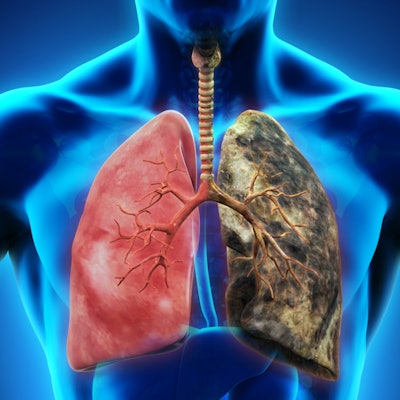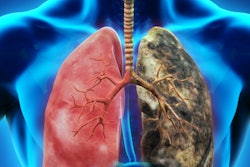
Fewer than one in 20 eligible adults undergo CT lung cancer screening in the U.S., and screening rates appear the lowest in states with the highest incidence of lung cancer, according to a study published November 12 in the Journal of the National Cancer Institute.
The findings highlight the need to determine what prevents patients eligible for screening from getting it -- and how to mitigate those barriers, wrote a team led by Stacy Fedewa, PhD, of the American Cancer Society in Atlanta.
"Lung cancer screening has the potential to avert death," the group wrote. "Despite this, previously reported uptake has been low ... This low uptake is attributed to multiple barriers, including lack of health system support, uncertainty of harm versus benefit, physicians' reluctance ... as well as psychosocial and access barriers among screening candidates."
Fedewa and colleagues sought to assess CT lung cancer screening utilization across all 50 U.S. states, including Washington, DC, between 2016 and 2018. They used data from the American College of Radiology's Lung Cancer Screening Registry to estimate screening rates and population-based surveys, information from the U.S. Census, and cancer registry data to estimate lung cancer burden. The team then evaluated whether screening rates matched states' lung cancer burden and patients' sociodemographic status and access to low-dose CT.
Overall, the authors found that statistically significant increase in lung cancer screening rates in 48 out of 50 states between 2016 and 2018 (from 3.3% to 5%). But there were variations: Some Northeastern states (Massachusetts, Vermont, and New Hampshire) with lower lung cancer burden (that is, less than 44 deaths per 100,000 people) had the highest screening ranges, between 12.8% and 15.2%, while some Southern states (Mississippi, West Virginia, and Arkansas) with high lung cancer burden (more than 50 deaths per 100,000) had screening rates of less than 4%. The exception was Kentucky, which has the nation's highest lung cancer death rate but also one of the highest screening rates (13.7%).
Compared with the national average, screening rate ratios were significantly lower in eight states, mostly in the West or South, and 50% higher in 13 states, mostly in the Northeast or Midwest (with Kentucky as an exception).
The team also found that compared with the national average, screening rates were 20% lower in states with a higher number of uninsured adult smokers and 40% lower in states with fewer screening facilities. Finally, the researchers discovered that women who smoked were more likely to get lung cancer screening, while Latinx smokers were less likely.
This mismatch between lung cancer burden and screening rates must be addressed, according to Fedewa and colleagues.
"The increasing but low utilization of lung cancer screening reflects both ongoing efforts to screen eligible adults, and the many challenges to do so," they concluded. "Without addressing critical gaps in health insurance and adequate reimbursement for lung cancer screening, its use will likely remain stunted."





















